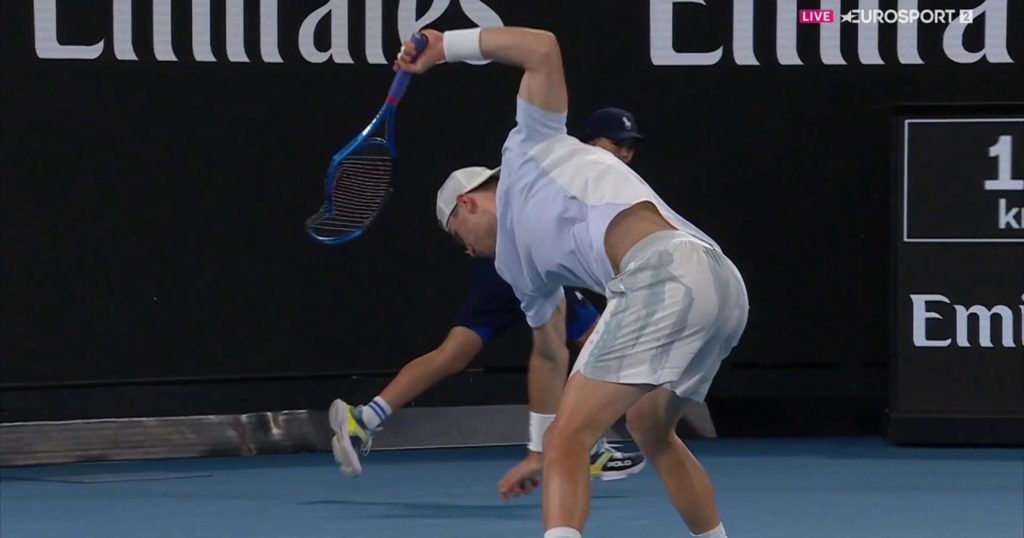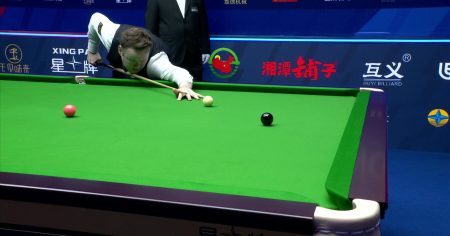The simmering frustration within Jack Draper finally erupted like a volcano during his Australian Open clash against Aleksandar Vukic. The young Briton, burdened by high expectations and plagued by a niggling hip injury, found himself battling not just his opponent but also his own inner demons. As the match slipped away from his grasp, Draper’s composure fractured. He unleashed a torrent of raw emotion, punctuated by the violent destruction of his racquet against the unforgiving hard court. The impact echoed through the stadium, a visceral manifestation of the internal pressure cooker he found himself in. This outburst, while visually dramatic, was more than a fleeting moment of temper. It painted a vivid picture of the immense mental and physical strain faced by professional athletes, particularly those navigating the high-stakes world of Grand Slam tournaments. Draper’s actions became a focal point, sparking debate about the acceptable boundaries of expressing frustration in competitive sports.
The incident wasn’t an isolated event; it was the culmination of several factors converging at a critical juncture in Draper’s young career. The Australian Open, the first Grand Slam of the year, carries immense weight and pressure. Players arrive with fresh hopes and renewed determination, eager to make their mark on the global stage. For Draper, this tournament represented an opportunity to solidify his position among the next generation of tennis stars. However, his preparations were hampered by a hip injury that had been lingering for some time. This physical limitation not only hampered his movement on the court but also added a psychological burden, undermining his confidence and adding to the mounting frustration. As the match progressed and Vukic’s consistent play exposed Draper’s vulnerabilities, the British player’s composure began to unravel, culminating in the dramatic display of racquet-smashing fury.
The hip injury itself played a significant role in Draper’s emotional meltdown. The constant nagging pain served as a persistent reminder of his physical limitations, undermining his ability to execute his game plan effectively. Every missed shot, every point lost became magnified by the awareness of his compromised physical state. This physical impediment further fuelled his frustration, creating a vicious cycle where the injury hindered his performance, leading to increased frustration, which in turn likely exacerbated the impact of the injury both physically and mentally. The limitations imposed by the injury served as a constant source of pressure, pushing Draper closer to the boiling point until he ultimately succumbed to the overwhelming surge of emotion.
The pressure of playing on the Grand Slam stage also contributed significantly to Draper’s outburst. The Australian Open, with its global audience and intense media scrutiny, is a pressure cooker for even the most seasoned professionals. For a young player like Draper, still finding his footing in the world of elite tennis, the weight of expectation can be particularly heavy. The desire to perform well, to prove himself worthy of the spotlight, can create immense internal pressure. This pressure, combined with the physical limitations imposed by his injury, created a perfect storm of frustration that ultimately found its release in the explosive destruction of his racquet. The incident served as a stark reminder of the immense psychological demands placed on athletes competing at the highest level.
Draper’s racquet smashing, while undeniably a breach of sporting etiquette, also offered a glimpse into the intense emotional battles fought within the minds of athletes. The act, although perceived as negative by some, can be interpreted as a release valve for the pent-up pressure and frustration. In the heat of the moment, with adrenaline coursing through his veins and the weight of expectation pressing down, Draper’s outburst became a raw and visceral expression of his inner turmoil. It was a human moment, a display of vulnerability that highlighted the emotional toll of competing at the highest level. While not condoning the act, it’s important to acknowledge the immense pressure athletes face and understand that such outbursts, while regrettable, can be a consequence of the intense emotional landscape of professional sports.
The incident also sparked a broader conversation about the acceptable boundaries of expressing frustration in sport. While some condemned Draper’s actions as unprofessional and unbecoming of a sportsman, others viewed it as a human response to immense pressure. The debate highlighted the complex relationship between athletes and their emotions, and the challenges of maintaining composure under intense scrutiny. Draper’s outburst served as a reminder that athletes are not robots; they are human beings subject to the same emotional fluctuations as anyone else. The incident provided an opportunity to discuss the mental health challenges faced by athletes and the importance of providing support systems to help them navigate the pressure-cooker environment of professional sports. It underscored the need for a more nuanced understanding of the emotional pressures inherent in high-stakes competition and the importance of creating a culture where athletes feel comfortable seeking help for managing their mental well-being.














